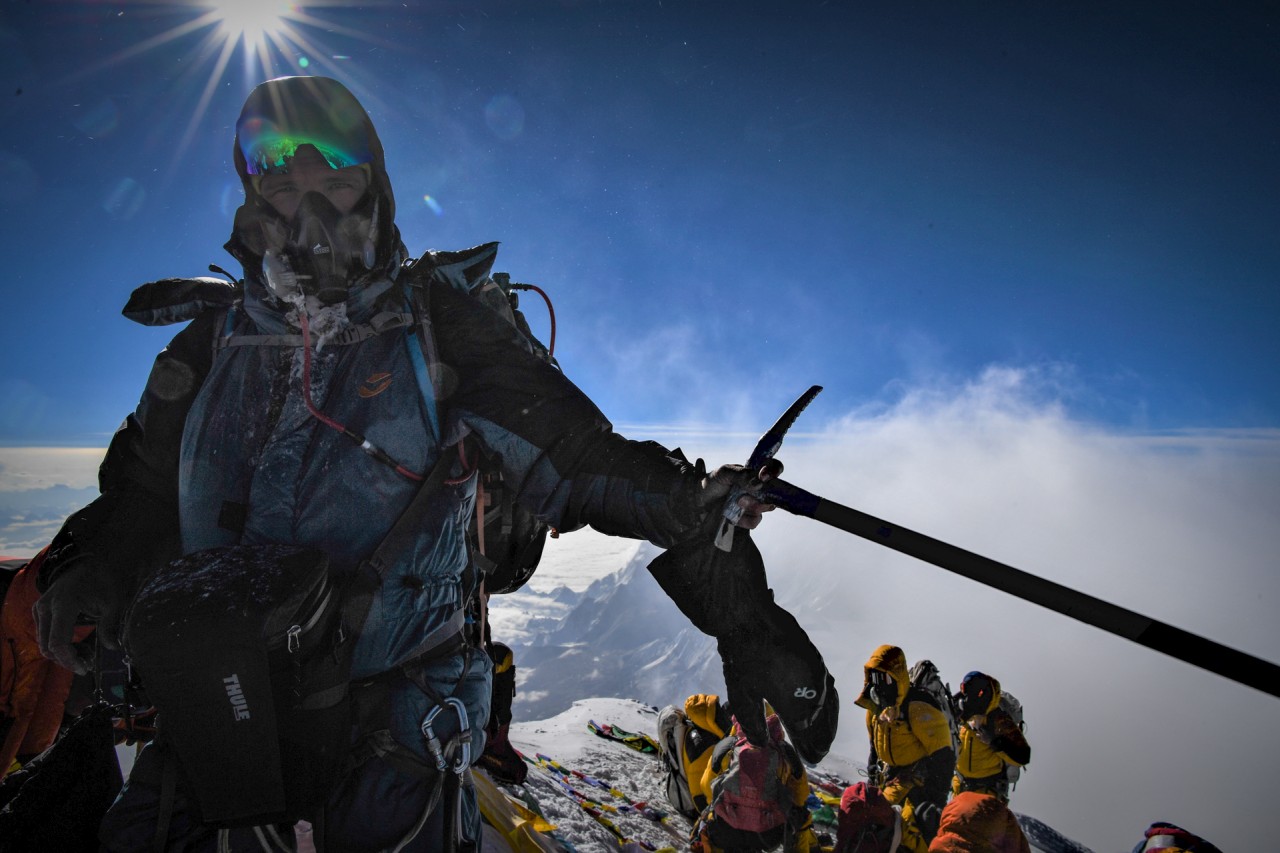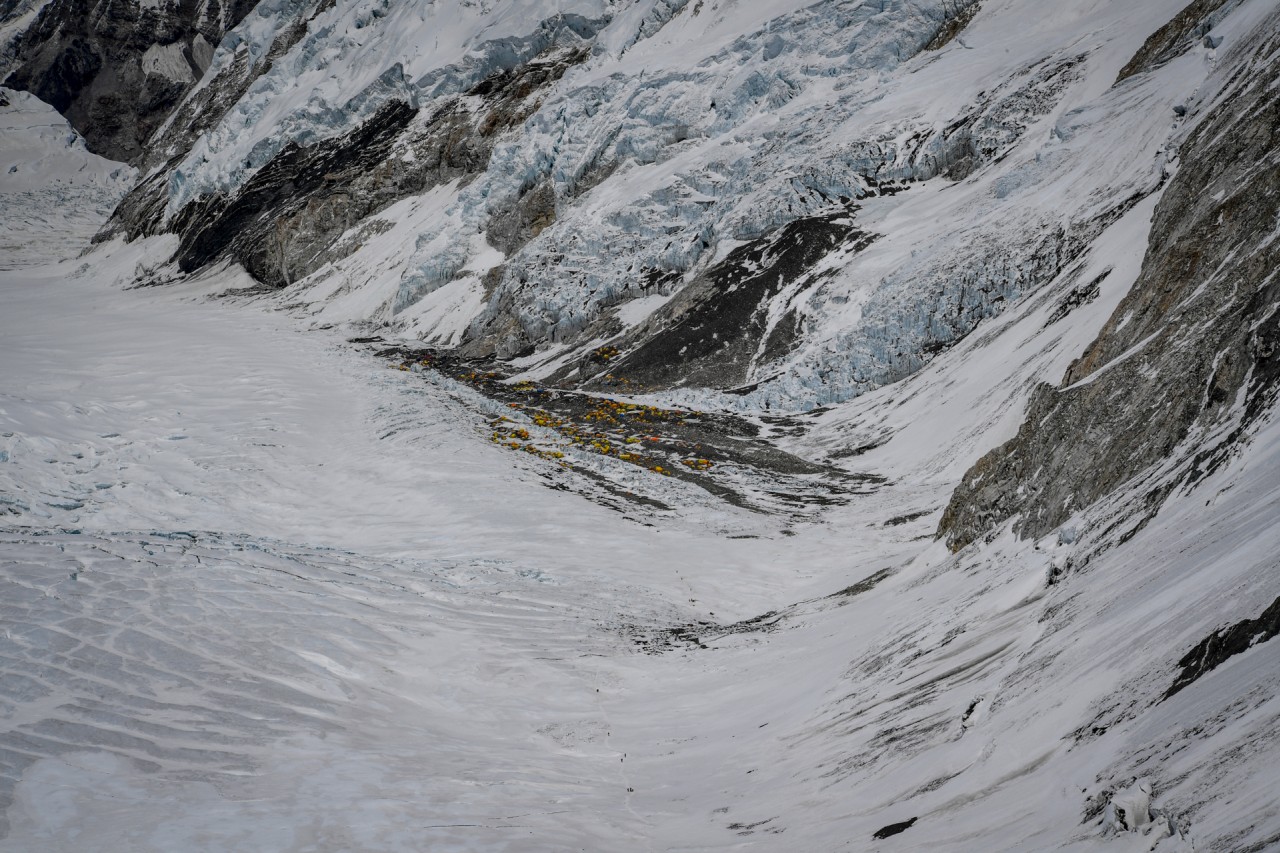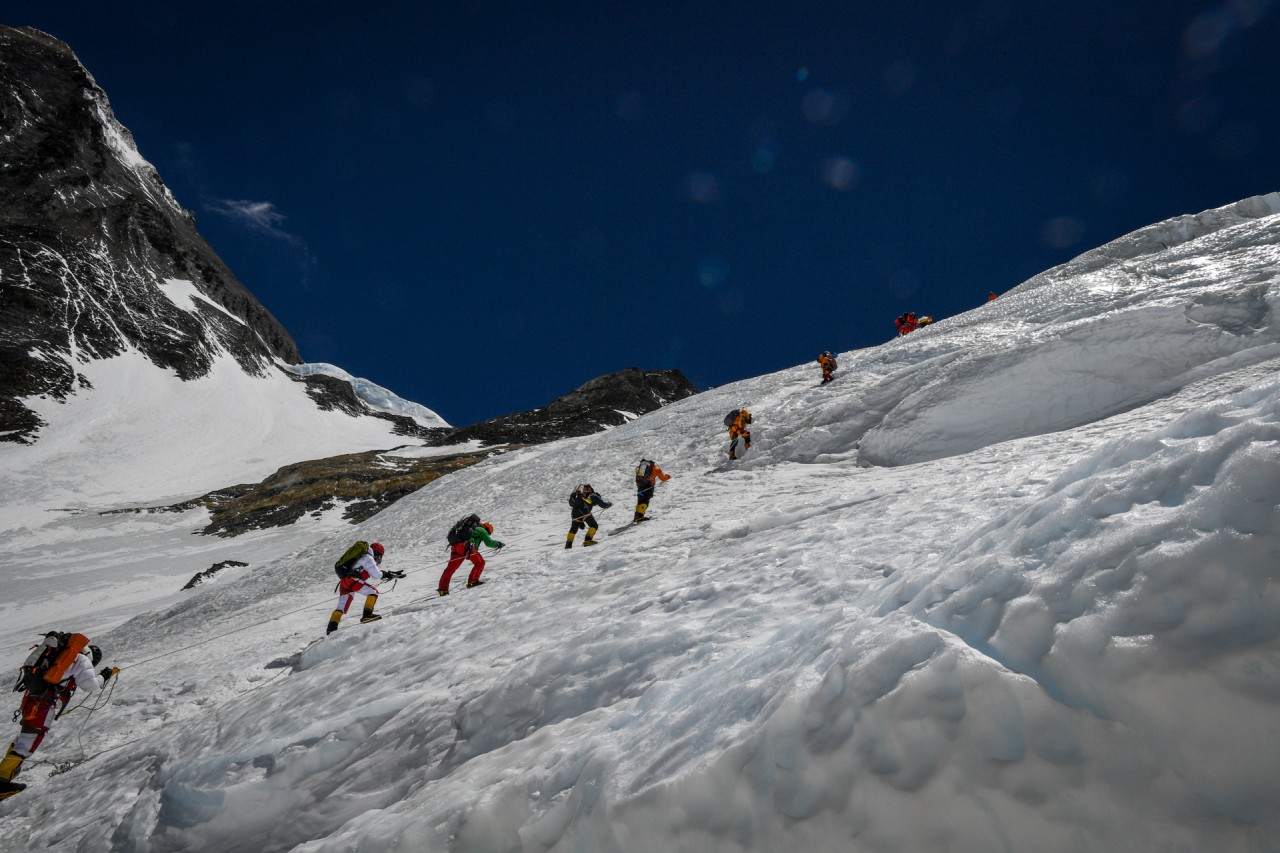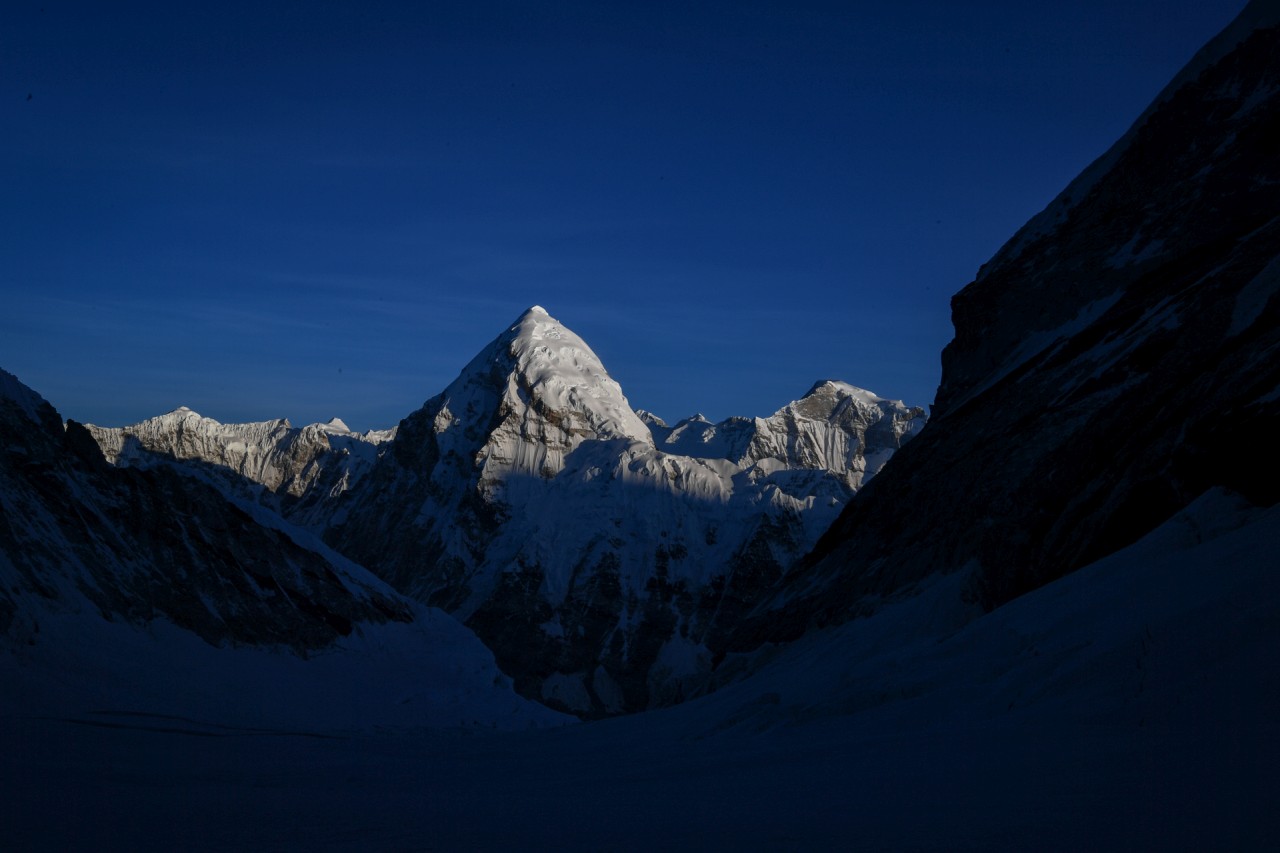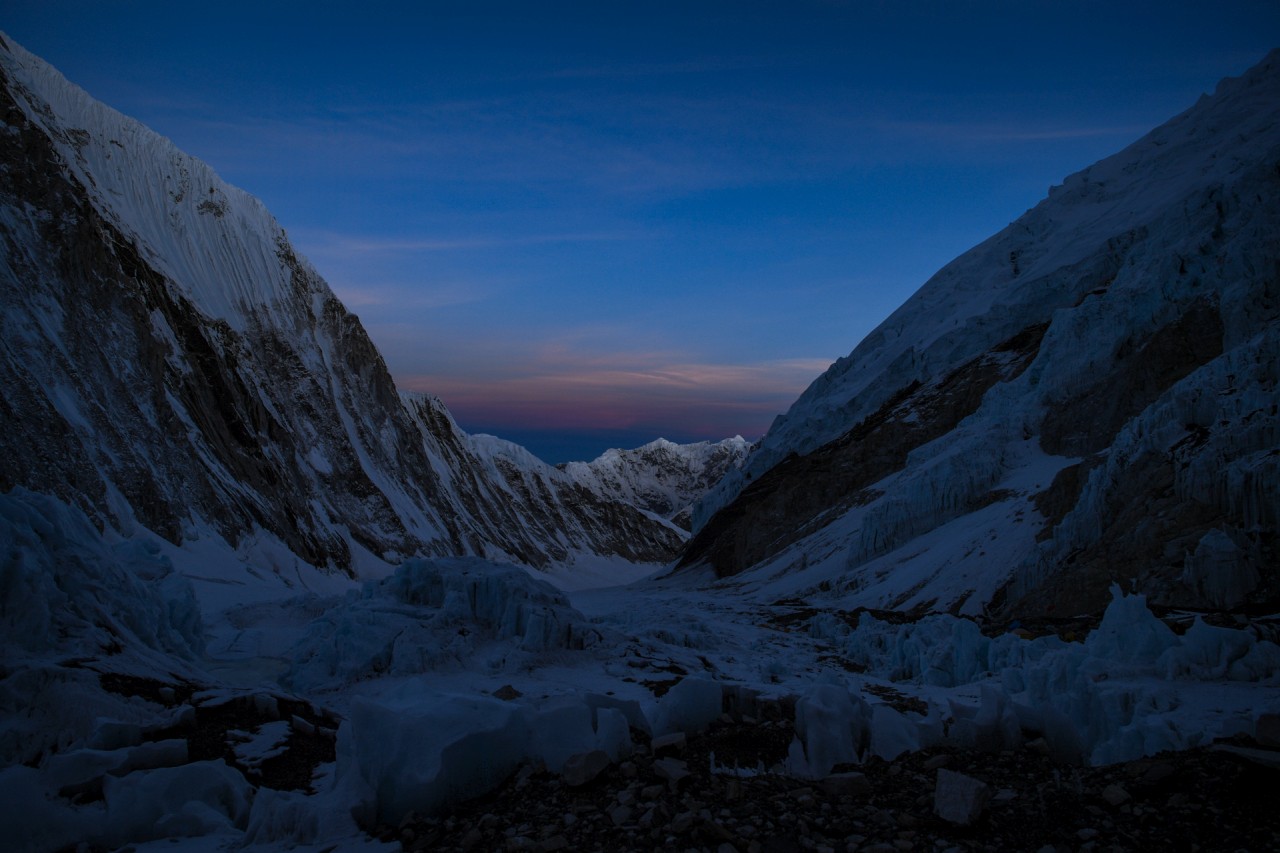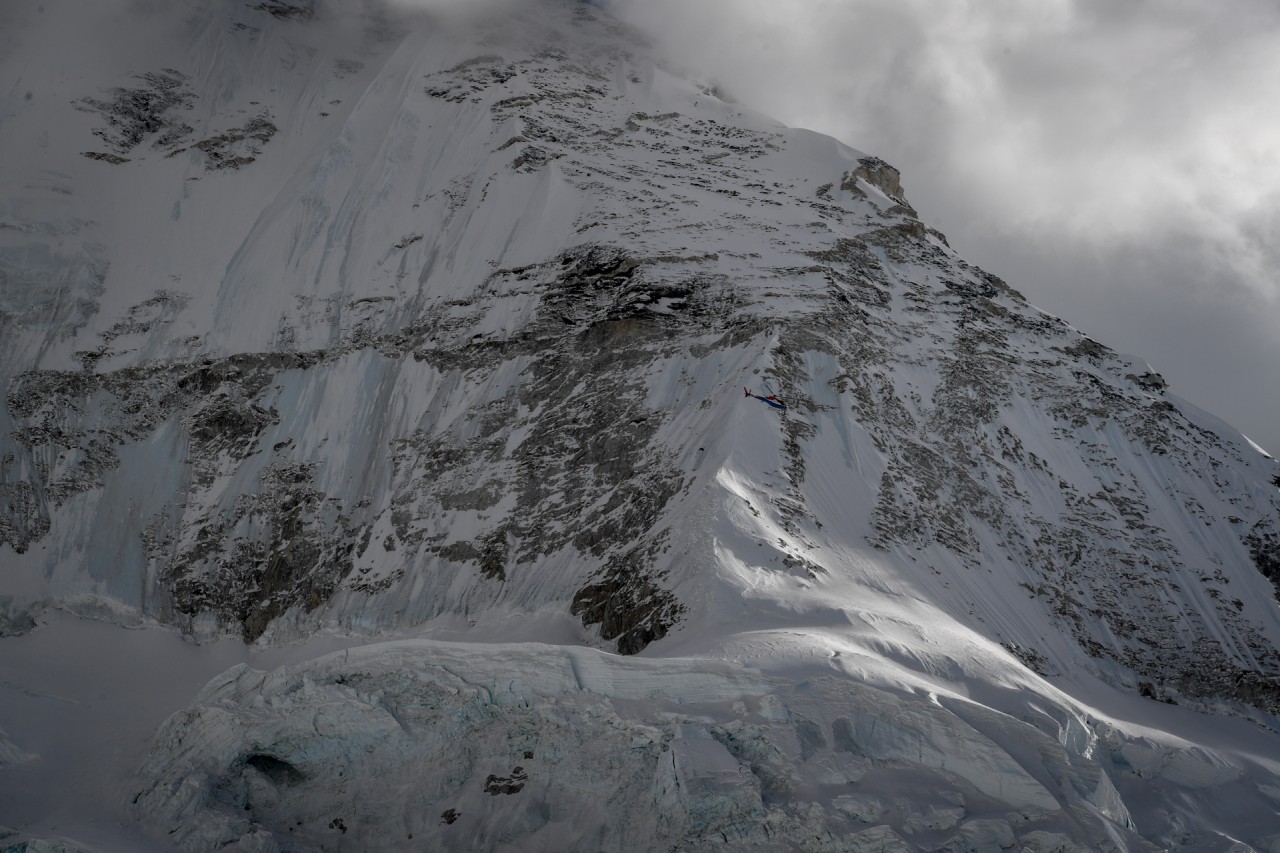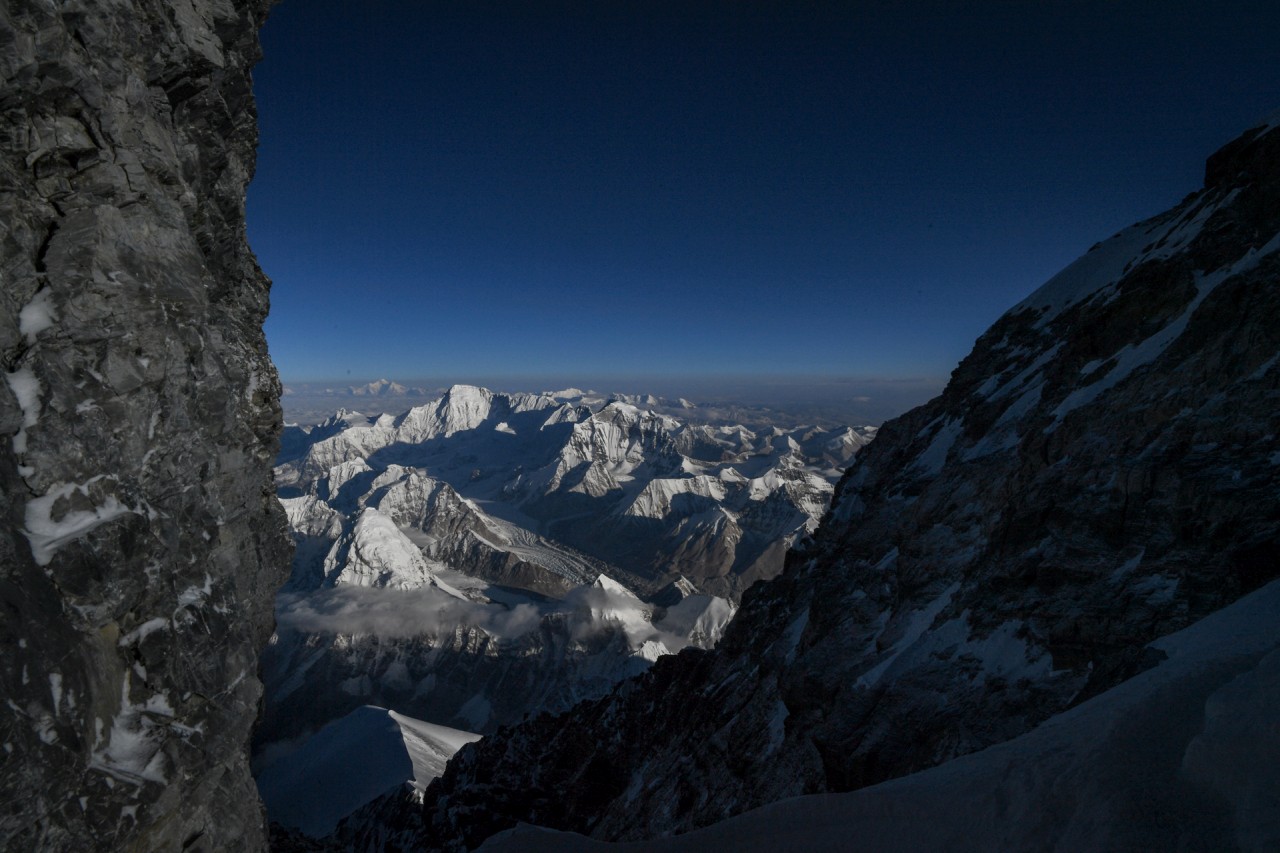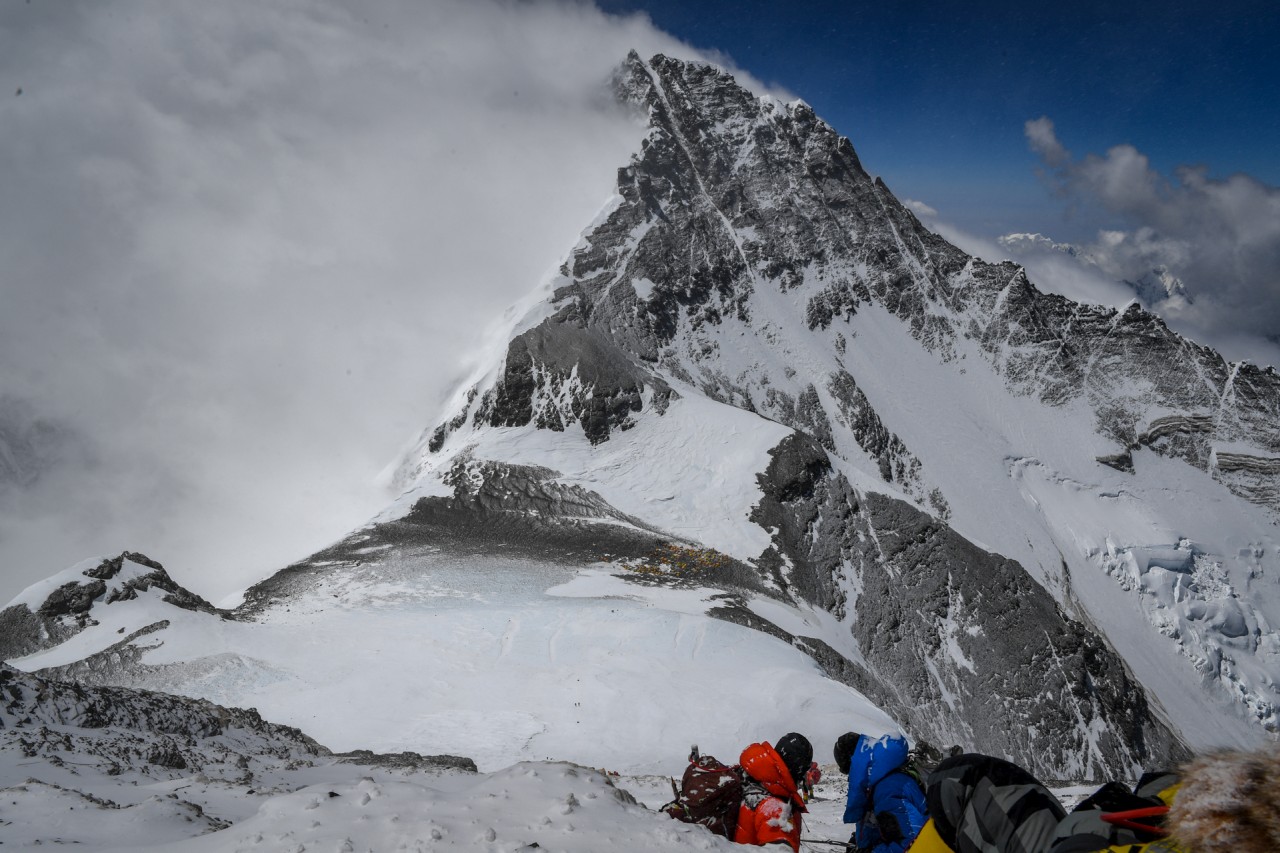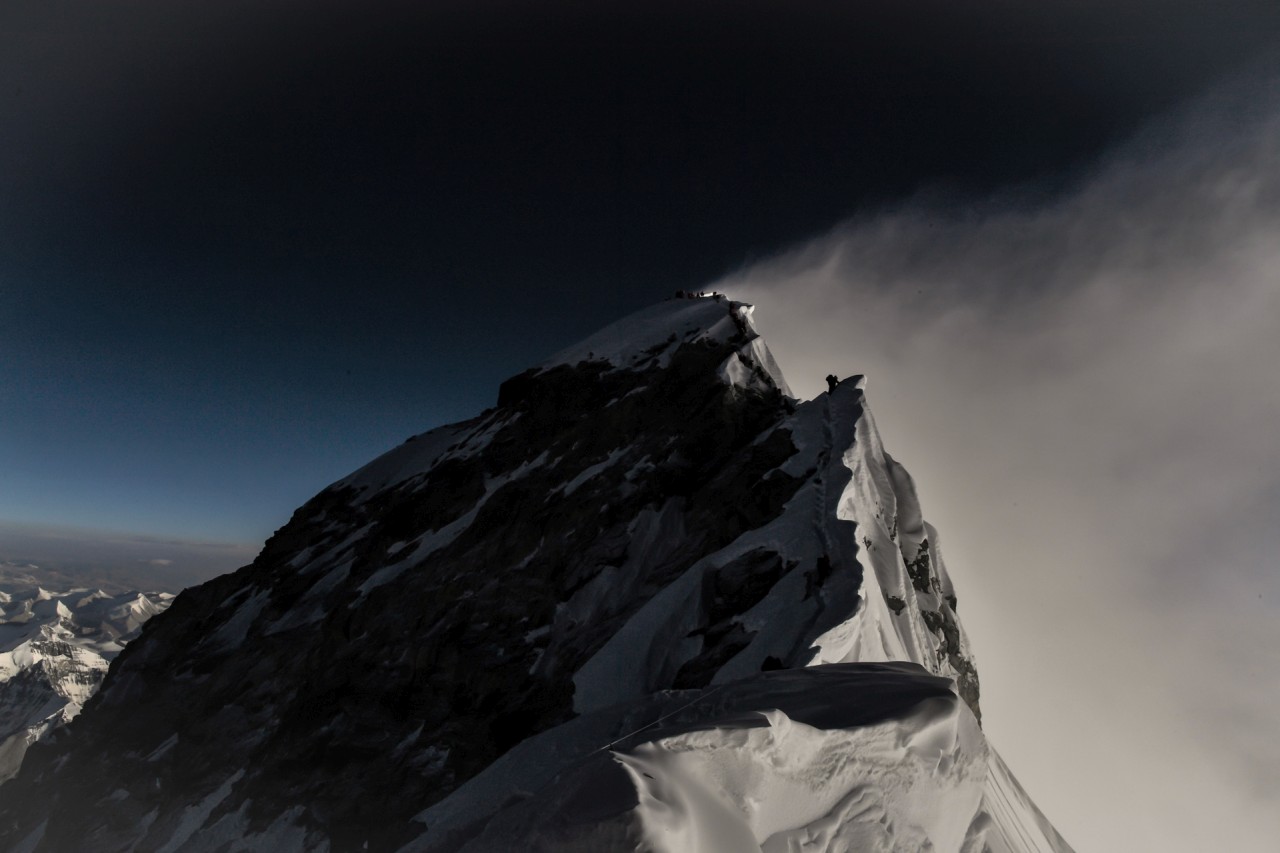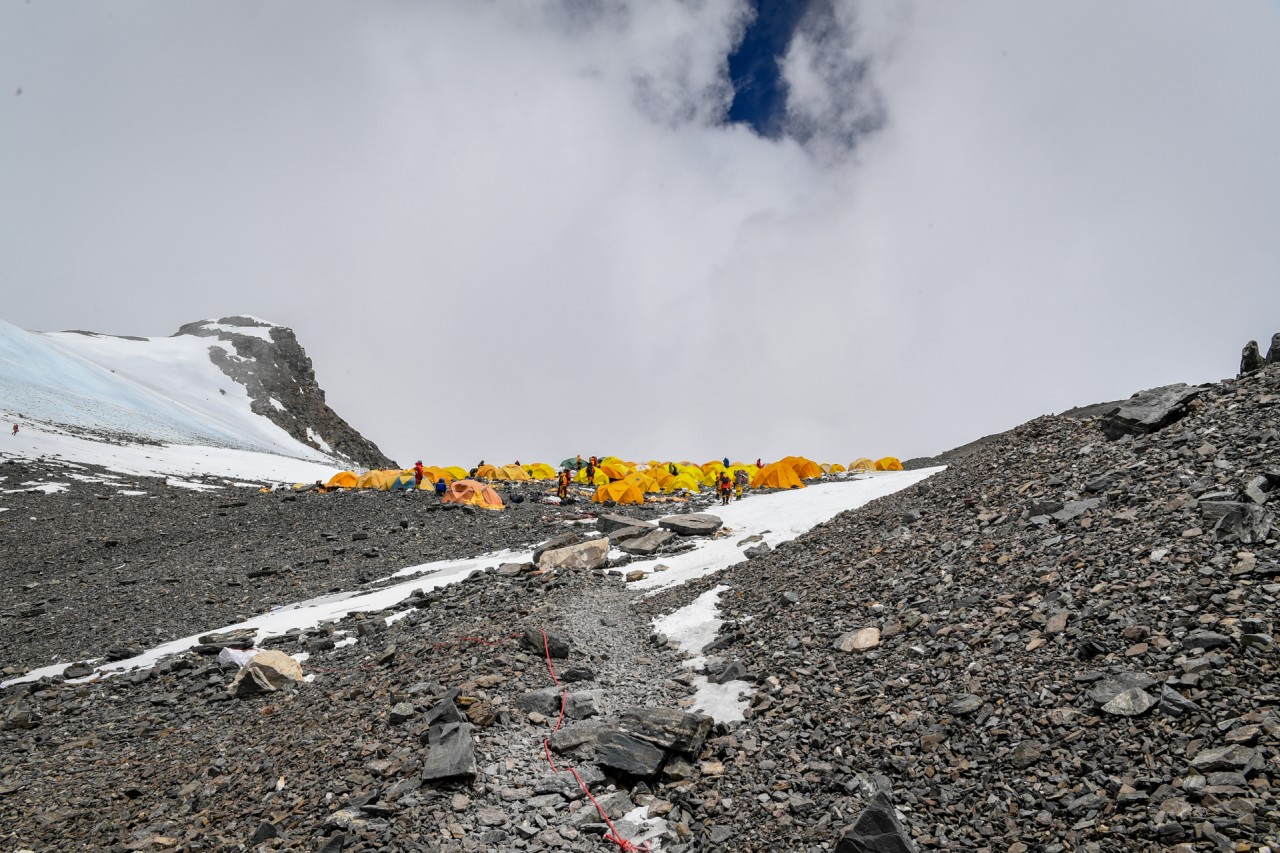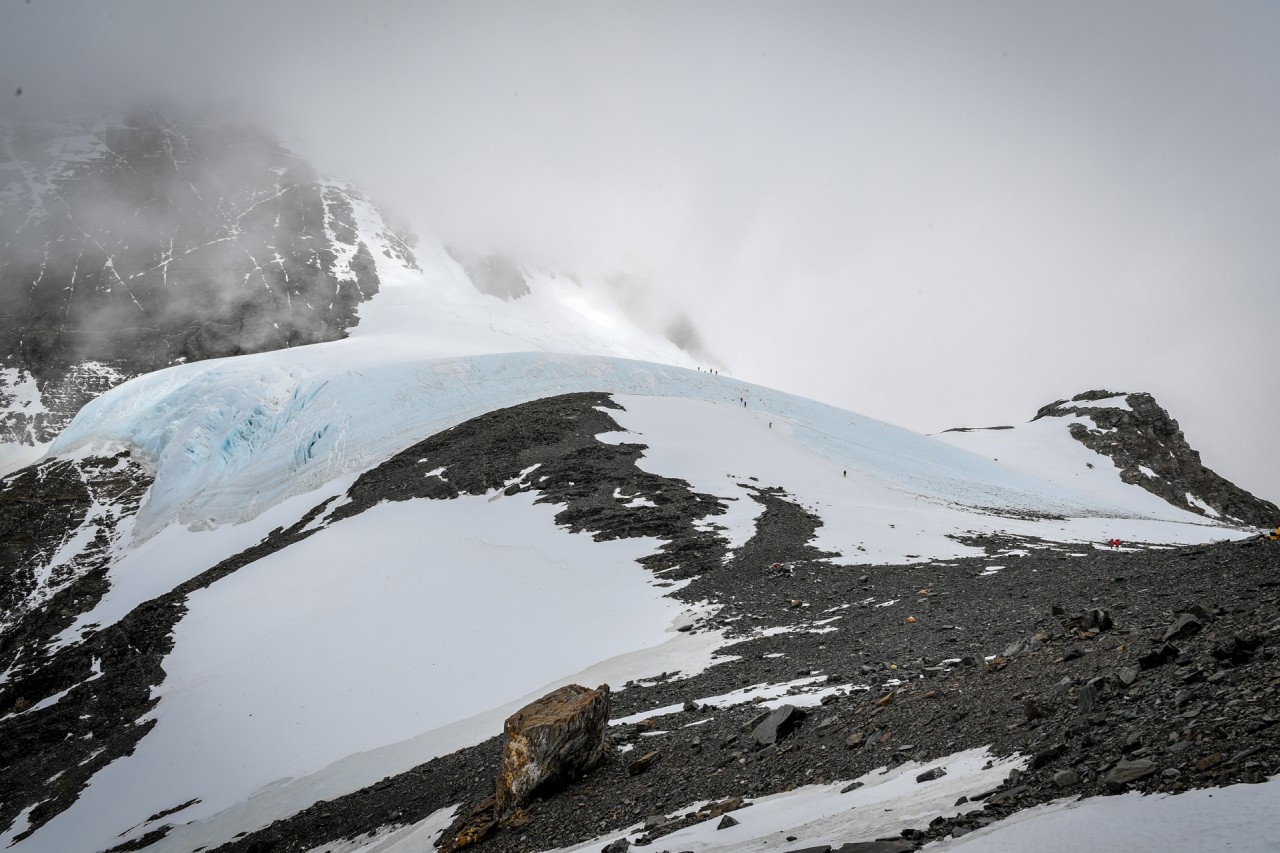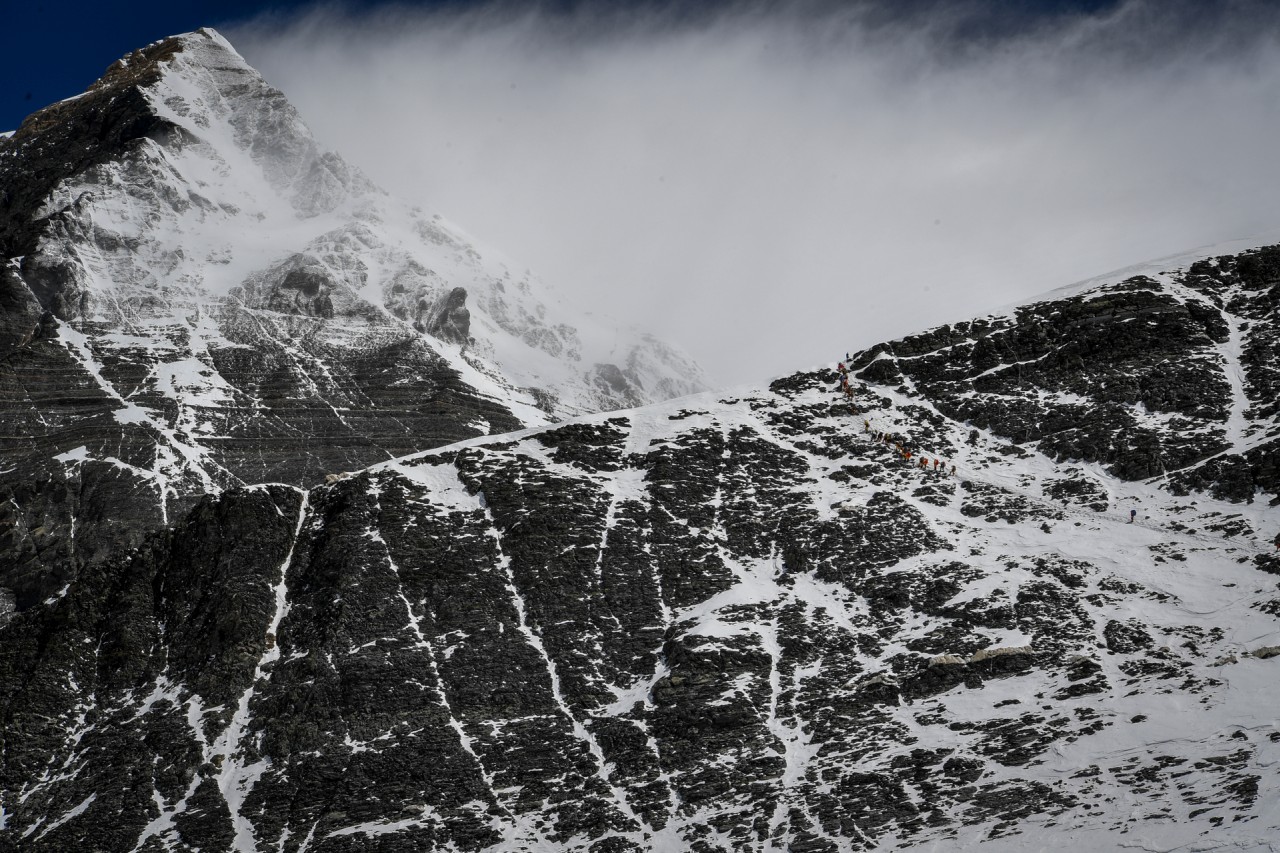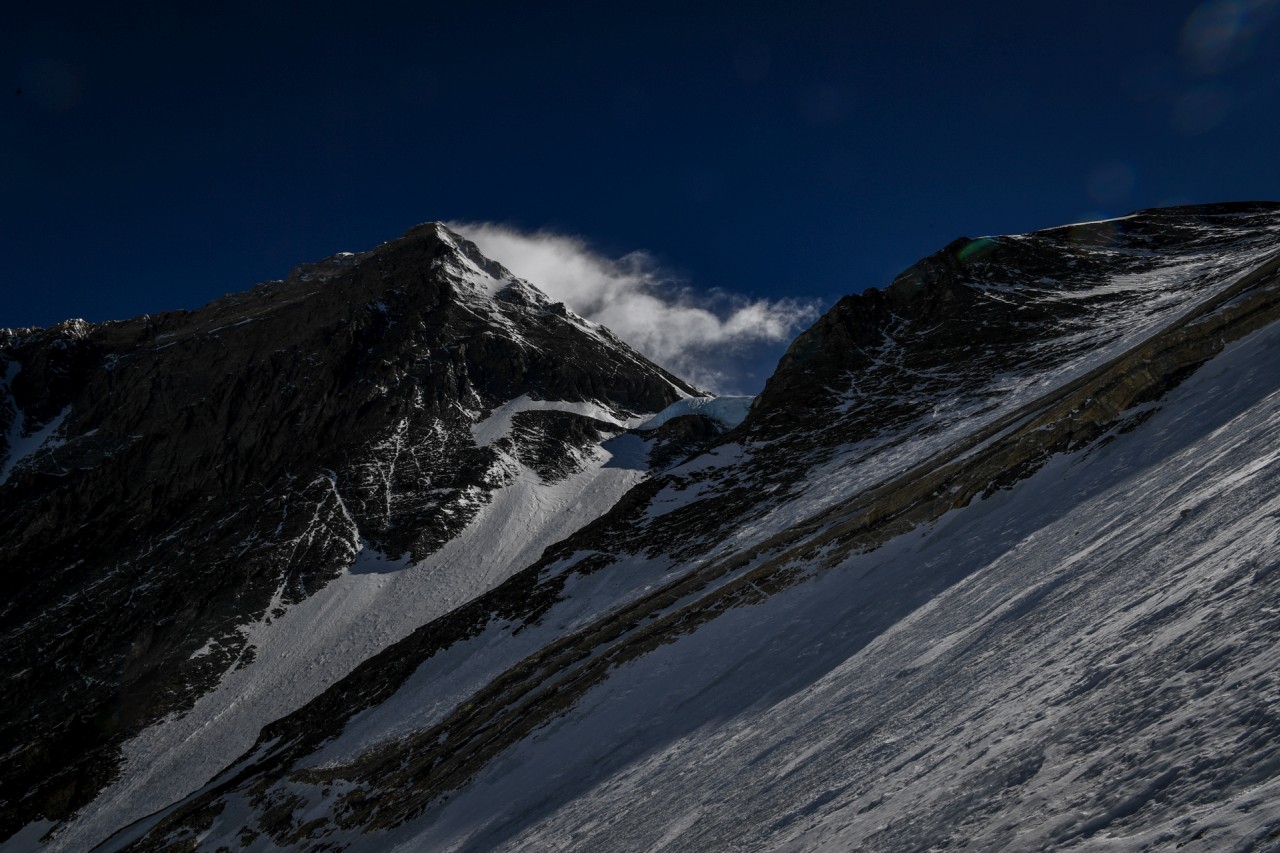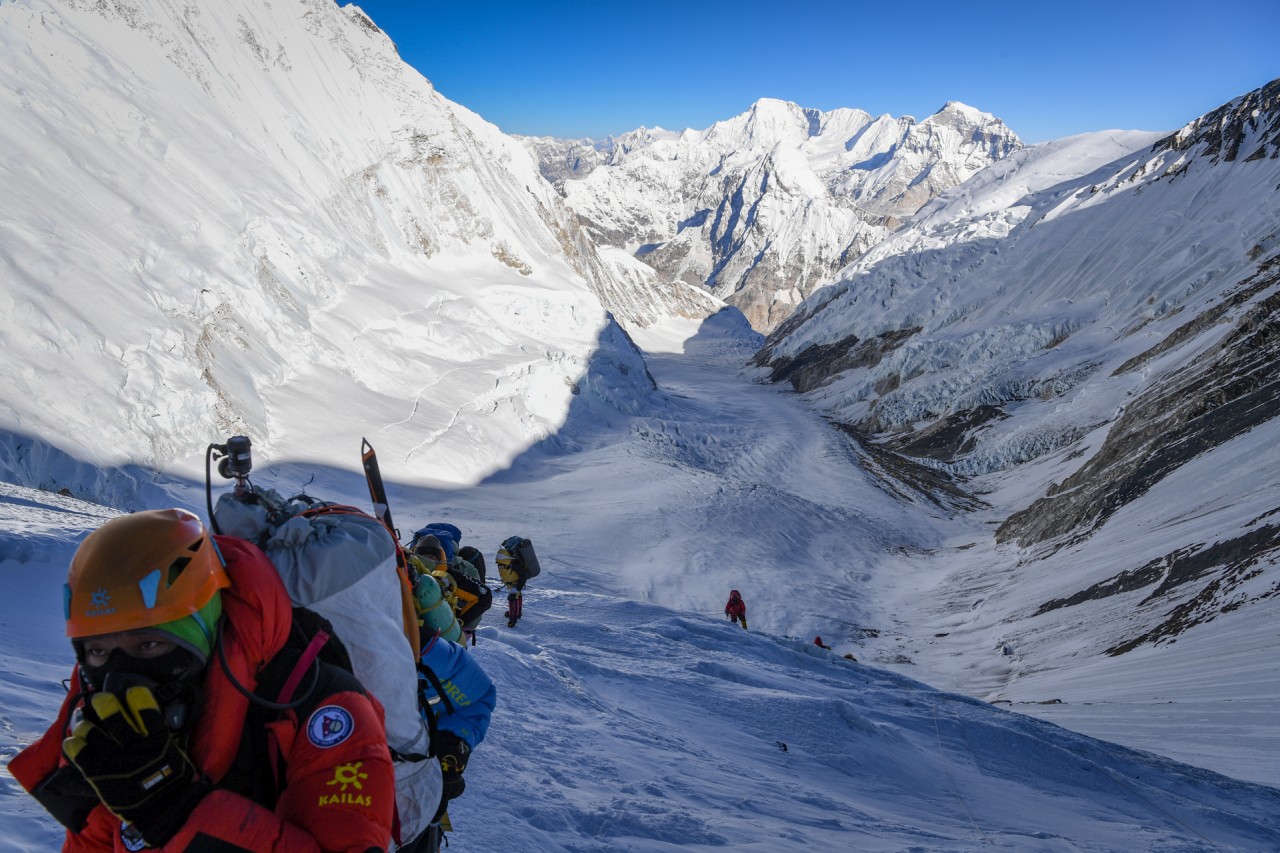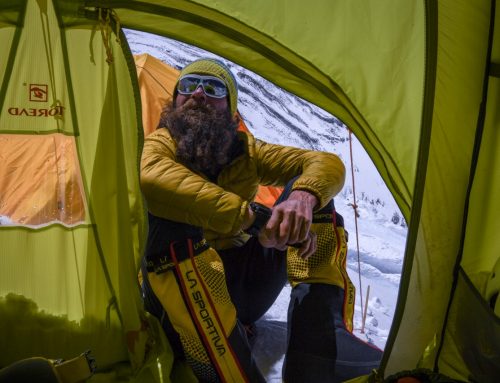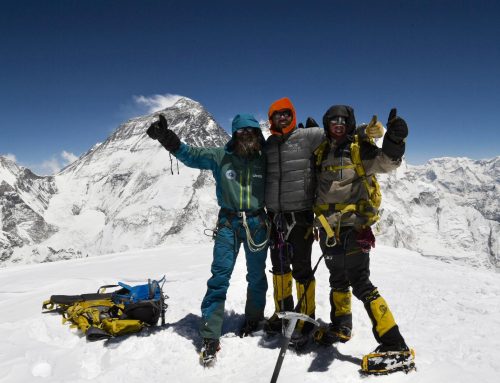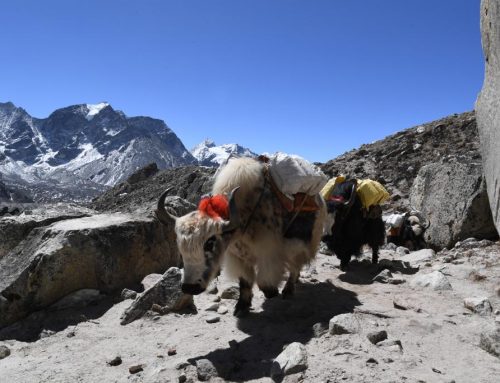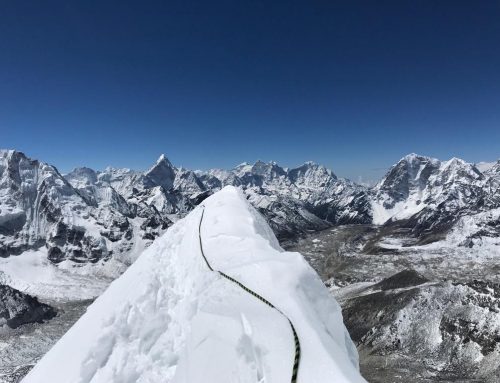Finally, after a week without a sign of life from myself, here are my impressions and experiences from one of the most impressive places in the world.
I do not want to list a diary or time records, camps, stages etc. here. Rather, I want to convey my feelings, impressions and thoughts about mountaineering on the highest mountain in the world.
Everything the press has said so far is intended to portray fear, horror and the worst picture of mountaineering, almost a bit oppressively similar to the world press or our Austrian press. Apparently, fear and horror messages sell better. No one from the press and media has been interested in us or our expedition. Everest is a bit boring via the normal route, one might say.
But 16 deaths in one season suddenly change the perspective and arouse interest as well as the picture with many people on the summit ridge. Everyone knows everything better immediately, and the famous and smart super mountaineers who were not even on the mountain this time are suddenly incredibly smart.
OK, ok, I do not want to moan anymore, it’s just that all the happenings on Everest are absolutely nothing new, and my impressions are sometimes completely different than they are now presented in the press.
For me, it was clear, even before this expedition, that I would not be alone on Everest. Surprise, surprise for all who believe that … Why? We are used to nothing else in the Alps, people in queues, crowded huts, people who have neither the qualifications nor the physical prerequisites to go to such mountains. More than 16 deaths per season could also be normal at Mont Blanc, but there no one gets upset, the same goes for Großglockner, Matterhorn, Eiger, Ortler, Elbrus, Aconcagua … All these mountains are attractions for thousands of climbers. There are dramas and people are dying. But summarized, yes, there are far too many people on the road, it has nothing to do with nature and freedom, it’s just a race. And the smallest mistakes can end badly, and yes, a mistake on Everest is likely to end deadly.
For me it was a job like any other, and it was a very nice job.
But why did so many people die on this mountain this year? Unfortunately, I do not have and do not want to draft the final wisdom. The following points are just a few thoughts on how things could happen on the mountain, how things went on the mountain and how things could have been improved…
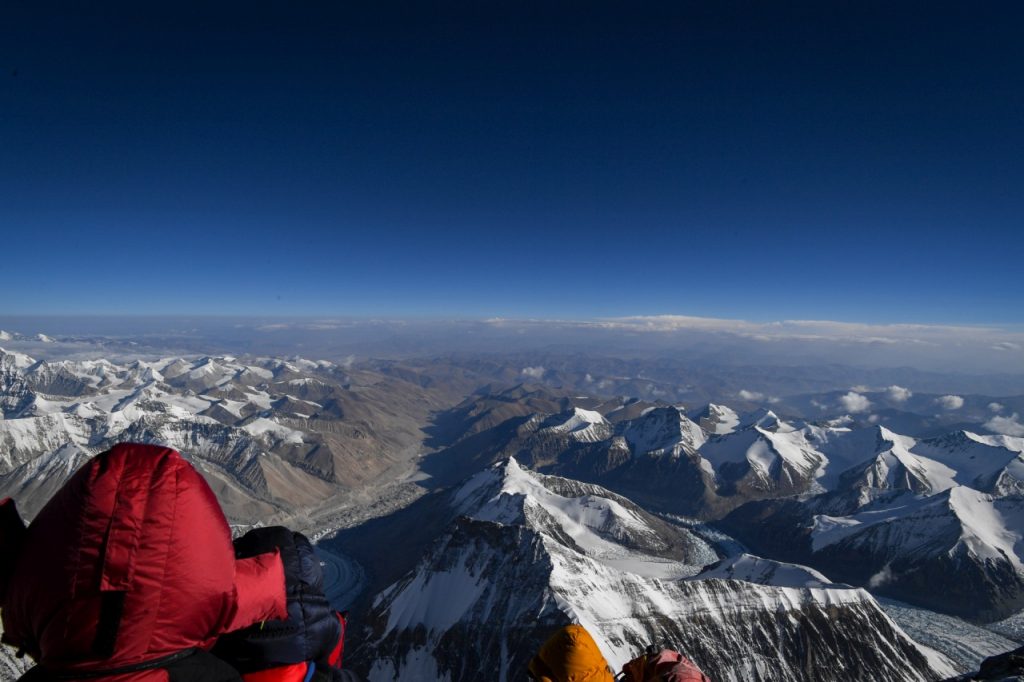
View from the summit to Tibet
Acclimatization
On the 2nd of May 2019 we have been the only group to reach the summit of Pumori (7.161 m). Technically demanding and extremely beautiful climbing. We laid all fixed ropes ourselves, built the camp chains and after almost 3 weeks of hard work, we were able to reach the summit with glorious weather. Many are now wondering why we have been on Pumori if we want to get to Everest at the end.
There are multiple reasons for this. For one, it is a beautiful mountain and we had the whole mountain for ourselves. By making the acclimatization on the Pumori, we were able to avoid several climbs through the objectively very dangerous Khumbu Icefall. We were also able to avoid standing in traffic for several hours with hundreds of other climbers and Sherpas in the objectively most dangerous ascent area on Everest. What is also obvious, mountaineers who manage to climb the technically difficult Pumori with 7.161 m without oxygen, will be able to climb the Everest technically without problems. In other words, we knew in advance that all our customers were really capable of climbing mountains. In this sense, we have done a first small step to optimize the risk for the Everest ascent.
Other providers have guests who need about 15 hours from the Base Camp to Camp 1 on Everest. I personally got to meet a very dear, about 50 years old, lady from India, we had lunch together and she told me proudly that she has already been on Everest. She said that she is able to hike for hours and she needs the said 15 hours from Base Camp to Camp 1, for example. For comparison, a Sherpa needs about 2 hours, I took myself 3 hours and our guests a maximum of 4 hours. The lady is now dead and is laying on the balcony at about 8,400 m.
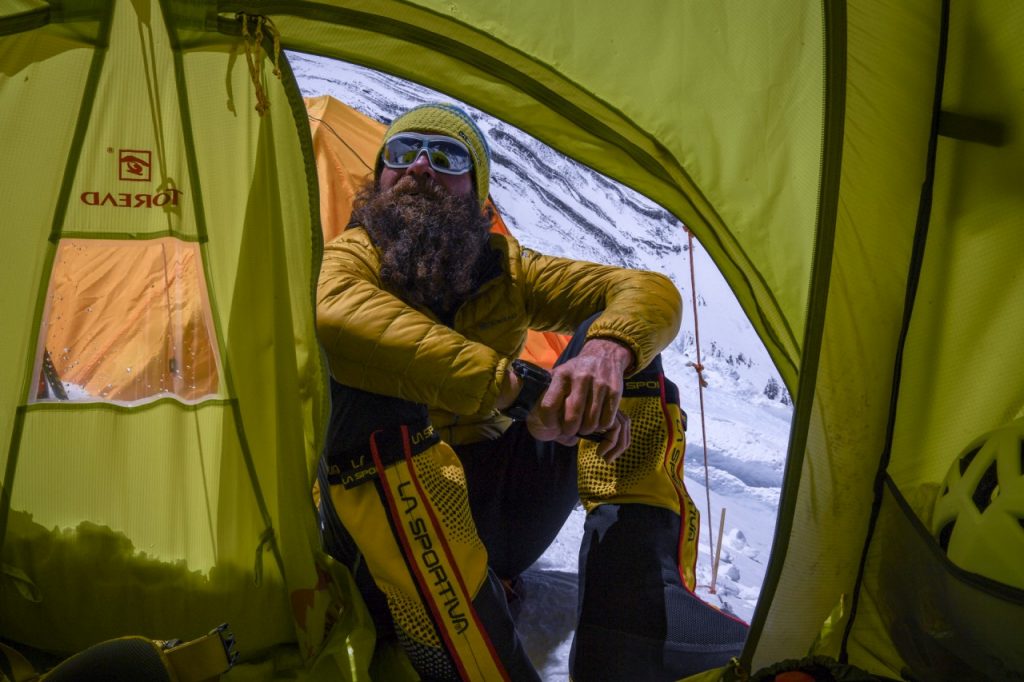
Stephan Keck in Camp 3
Weather
With HIMEX (Himalayan Experience) and Russel Brice I had the opportunity to get to know the highest level of professionalism concerning a weather report. Russ has led more than 40 expeditions to Everest so far. Every little wind sign, changes on the mountain or valley and high winds have been analysed and everything was documented and evaluated constantly. Russ and IMG have been working together for decades in this extremely sensitive area. Daily weather meetings and daily coordination in our own mountain guide team determine the approach on the mountain significantly. Up to 10 international weather charts and weather forecasts are recorded daily and compared to the actual local weather. After all these analysations, we design our tactics for the mountain.
A little anecdote to the weather: The provider which states on social media and on his own platform that he is responsible for the summit fix-ropes, Garrett M., said the subject of weather, original quote when looking at a weather map: „Where can I find Mount Everest?“ and a few minutes later: „How can I tell which direction the wind is coming from?“
Local Agency: „We do not have a weather forecast, we have already been 5 times on the summit on the 21st of May. It has always been good at the summit at this time, so it will also fit this time.“
Stephan Keck 02.06.2019 Kathmandu
We counted up to 25 Heli flights per day from Camp 2 from in the period from the 21st to the 26th. Dead bodies were flown out as well as injured and exhausted people and, according to the official statement, mostly people with frostbite. Frostbite due to people being unable to read a weather report.
What we do not know and cannot prove, but which is probably an open secret: A fairly large amount of the flights was made for taxi flights from the Camp 2 for paying guests. Very much to the advantage of the corrupt agencies of these guests, who collect a kickback for every faked rescue flight. Because taxi flights from the Camp 2 are not allowed.
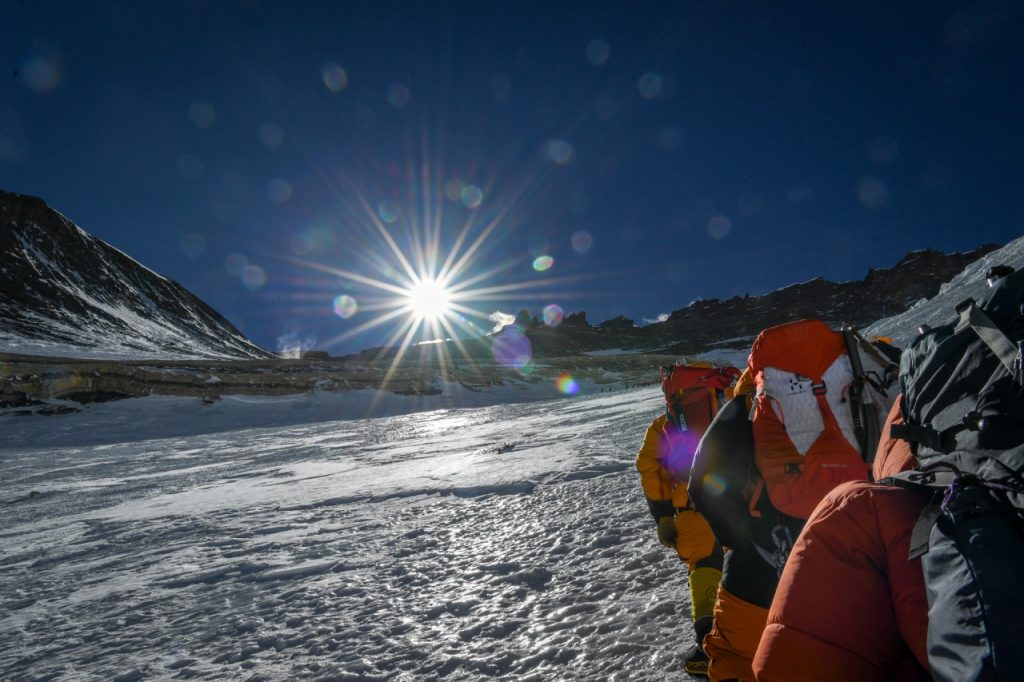
Ascent to Camp 4
Tactics on the mountain
In addition to the weather, the perfect acclimatization and the mountaineering abilities of the guests, probably the most important point for a „trouble-free“ summit success is the tactic. It is of great benefit to know how many mountaineers and Sherpas are currently in the Base Camp. In addition, meetings and arrangements of the different providers are advantageous to split the inrush on the mountain as good as possible. The combination of agreements, the right reading of the weather report and the knowledge about the physical performance of the participants make it possible to choose the best summit day for the own group.
Traffic jams as we could see them on photos from the 21th and the 22nd arise when providers, for a variety of reasons, just start out of thin air. We deliberately chose the last possible day for us to avoid all the odds and had as few people as possible on the summit day.
In addition, there are rules and fixed procedures on the summit day. We started on the 23rd as the very last group at the south saddle on 7.900 m. We left Camp 4 at 01:00 AM. Each participant had 3 bottles of oxygen with 200 bar available. Set to a flow of 4 litres, one bottle is then sufficient for 4 hours. So it’s a simple calculation example – we have a 12 hours’ time slot to the summit and back. Divided into three safety stops, we take the first bottle to the balcony with max. 2 hours which means double safety, the second bottle to the south summit with max. 2 hours, again double safety, and the third bottle for the summit. At the safety stops, the bottles which were consumed for each sub-section are deposited and taken along in the descend. If necessary, the reserves can be used in the descent. Clear rules = highest security!
We were able to reach the summit with our participants within 6 hours and after 10 hours we have all been back in Camp 4. Absolutely no congestion on the ascent, but a little on the descent due to the upcoming traffic. But this was absolutely no problem due to more than enough oxygen and time reserves. We were able to reach Camp 4 before the weather changed, we already were aware of, and some of us already made the descend to Camp 2 on the same day. Only on this day alone 4 people died on Everest.
For us, due to rules, tactics, weather knowledge, surveillance and monitoring of Russ from the BC, everything worked out again and all summit aspirants made it to the summit without major congestion and above all that, everybody injury-free and without frostbite, also all our Sherpas.
That has been us on Everest, as I said no claim to moan around, but it has now worked for Russ and us over 40 times.
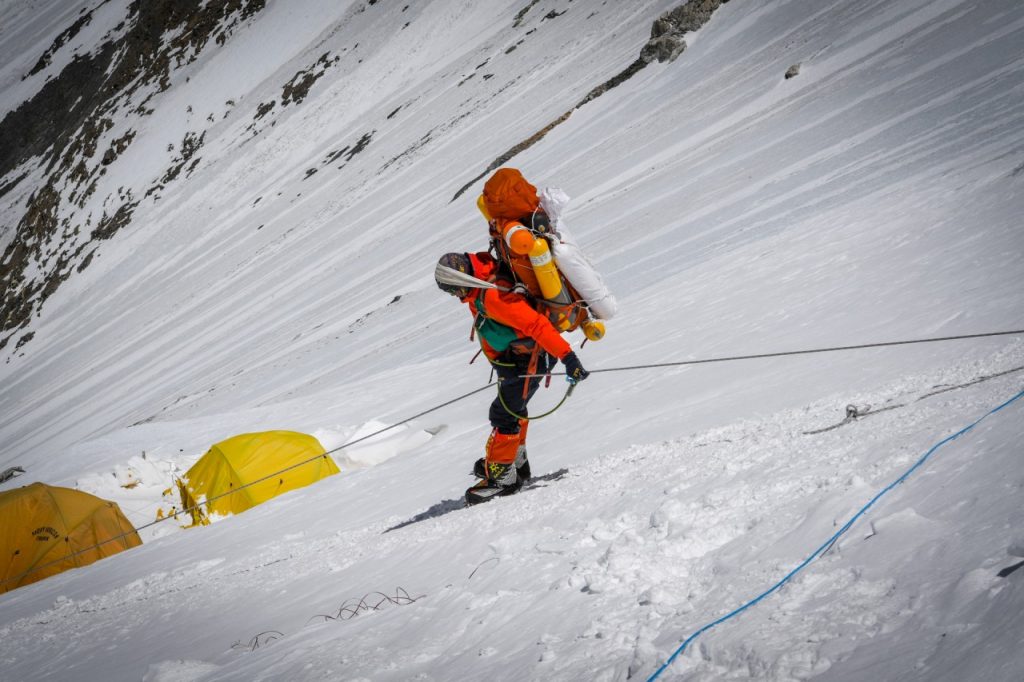
A completely over-burdened Sherpa transports the oxygen bottles down
Rules?
I cannot really understand the whole discussion about the rich customers, rules, blocking the mountain and prohibiting oxygen, if people want to go there to die, in my view it should remain a free decision to them. You can go for example to 7 Summit and pay $ 25,000, which you might then know that this agency alone has lost more than 15 climbers and Sherpas in the Himalayas this year. But you can also spend more money and try to find the right agency to get more safety, support and know-how on the mountain, it’s always a question of the value of one’s life…
I consider general rules and prohibitions for guests on the mountain as absolute bullshit, mountains are one of the last free spaces for people on earth. Rules on certain routes and strict rules for event organizers, however, might make sense.
It would make sense to only let people go to Everest which have at least been to another 8.000 m peak before. Or organizations should be checked concerning the number of their lost mountaineers and the circumstances of the accidents should be checked. Organizers who have guests which need 15 hours from BC to Camp 1 and take those guests to the summit, work grossly negligent and should be excluded as organizers on Everest. Also organizers who have more than 15 deaths on different expeditions in one season should be considered and blocked…
That would not be very rough restrictions and so possibly the one or the other dead could be avoided. But whatever, we will not change the system.
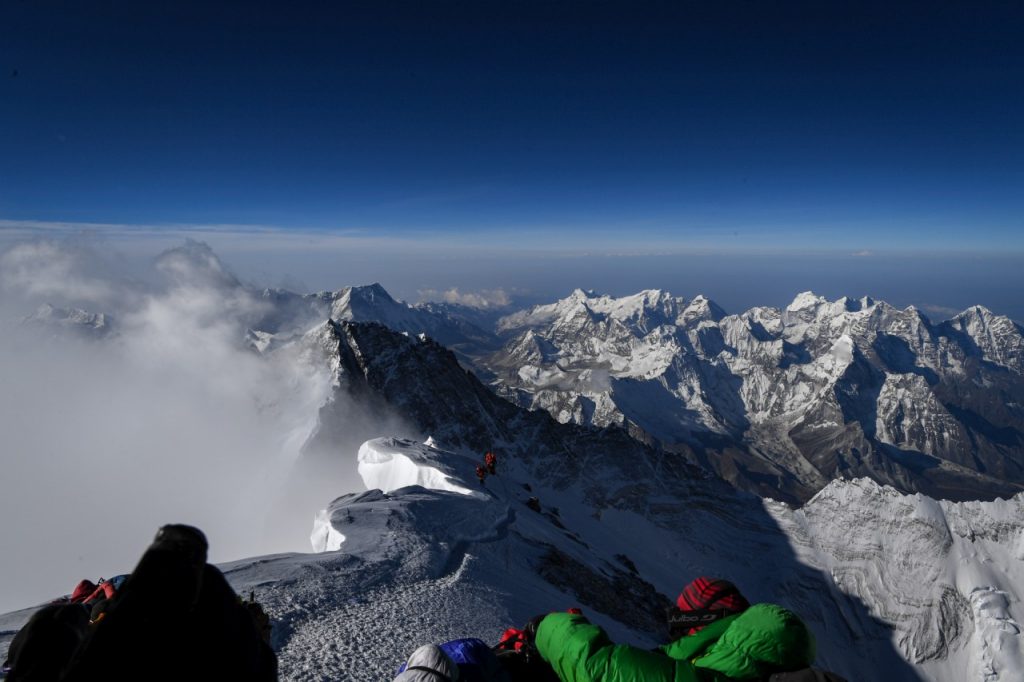
View from the summit towards the ascent and the southern summit
Oxygen
About the topic oxygen: For me it was the first mountain and the first expedition ever with oxygen. It makes perfect sense to follow the rules. What fascinates me the most was the better blood circulation and the feeling of warmth, as soon as you have the mask on. I never felt cold and walked more or less the entire way from the top back to Camp 4 without gloves. What is also fascinating is the possibility to get more speed on the mountain. With 4 litres oxygen on Everest, it was much easier for me than climbing the Pumori. Bad taste: Someone must be aware that when a mistake happens and suddenly at 8.800 m someone goes from 4 litres oxygen to zero, it’s likely that this person is going to die.
„Now I came back with a beautiful summit success on Pumori and Everest.“
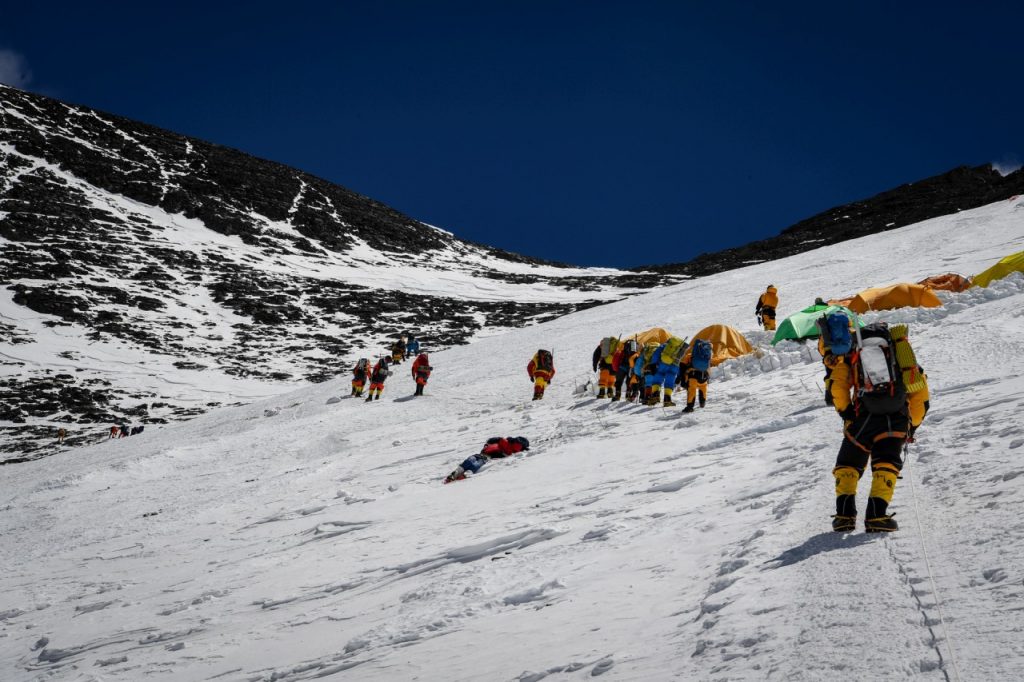
Camp 4: A dead Bulgarian mountaineer lies next to the fixed rope
Conclusion
I went to the expedition with the idea that there will be many people on the mountain, I also was thinking that I will see dead bodies from the past years. I went also there thinking that we would see a lot of rubbish on the mountain, and I was thinking that the Base Camp is a small town.
And I have not seen a single dead body from the past years, unfortunately I have seen 3 dead from this year, and partly from a day before our ascent. We went straight past a dead Bulgarian in the Lhotse flank at Camp 4, his body was immediately next to the fixed rope, his stomach was bare and his face was covered with clothing. Another dead was directly in the fixed rope on the way from Camp 4 to the balcony and one Indian woman without gloves, you could tell by the hands that it was a woman, was headfirst hanging in the fixed rope, everyone had to jump directly over them. A dead American was in the place where the Hillary Step was once, also directly in the fixed rope, and each one who has been on the summit this year had to climb over it.
It may sound inhuman and in my view it is also for the first moment, but even if we had brought the dead bodies down in our group, we would not have been able to save any lives with it. Inhumane for me is the procedure from the responsible agencies and team members – How can you easily leave someone who was on the mountain with you for weeks and go on to the summit? This thought was more shocking to me than the fact that people are dying on this mountain, which is obvious and has been known for decades. I was aware of that in a certain way, but I’m sure that these pictures will stay in my head for a very long time or will stay forever.
That’s part of this job, and if I cannot live with that, I’m not allowed to go there anymore.
We were all alone on the Pumori and had almost no traffic jams on Everest, which also surprised me rather positively than negatively, the way to the summit was beautiful and I could enjoy the view as well as the mountaineering itself.
Concerning the garbage on the mountain, I can only speak of my view and our BC. We have left the BC absolutely garbage free. We could see both, in the Camp 1 as well as in the Camp 2 and 3, garbage from the past years. In camp 2 due to avalanches from past years, in Camp 1 Due to storm and carelessness. All in all, however, this situation was much better than my idea.
Only in camp 4 it looked catastrophic, due to the fact that this year was absolutely no snow in the south saddle, all the garbage of the last decades was set free. But you have to be fair to say that even from there 10,000 kg of garbage have been taken away this season alone and it looks like the situation will probably improve in the next few years.
For me it was a wonderful experience, both morally and mountaineering again, and I will come back to the highest mountain in the world. Life is good in the mountains. And I am grateful that it is possible to experience this type of mountaineering as freely and fully as possible.
See you soon from India … .. Stephan


